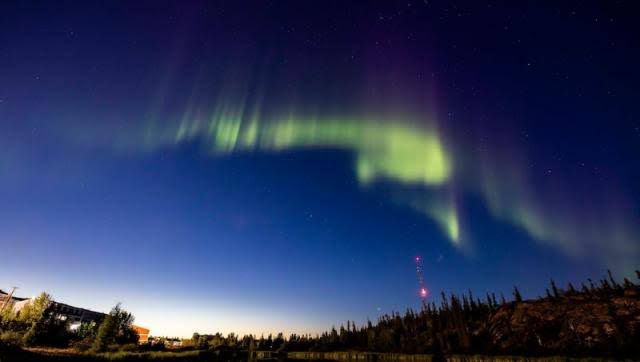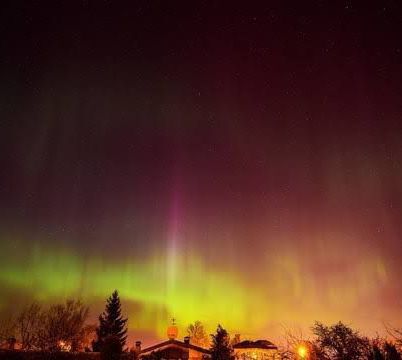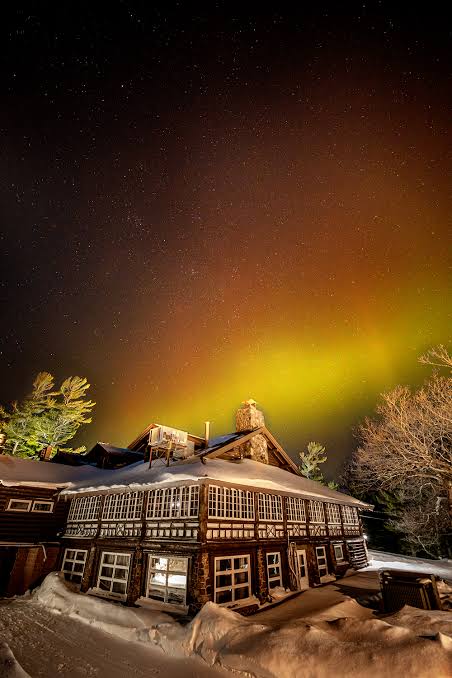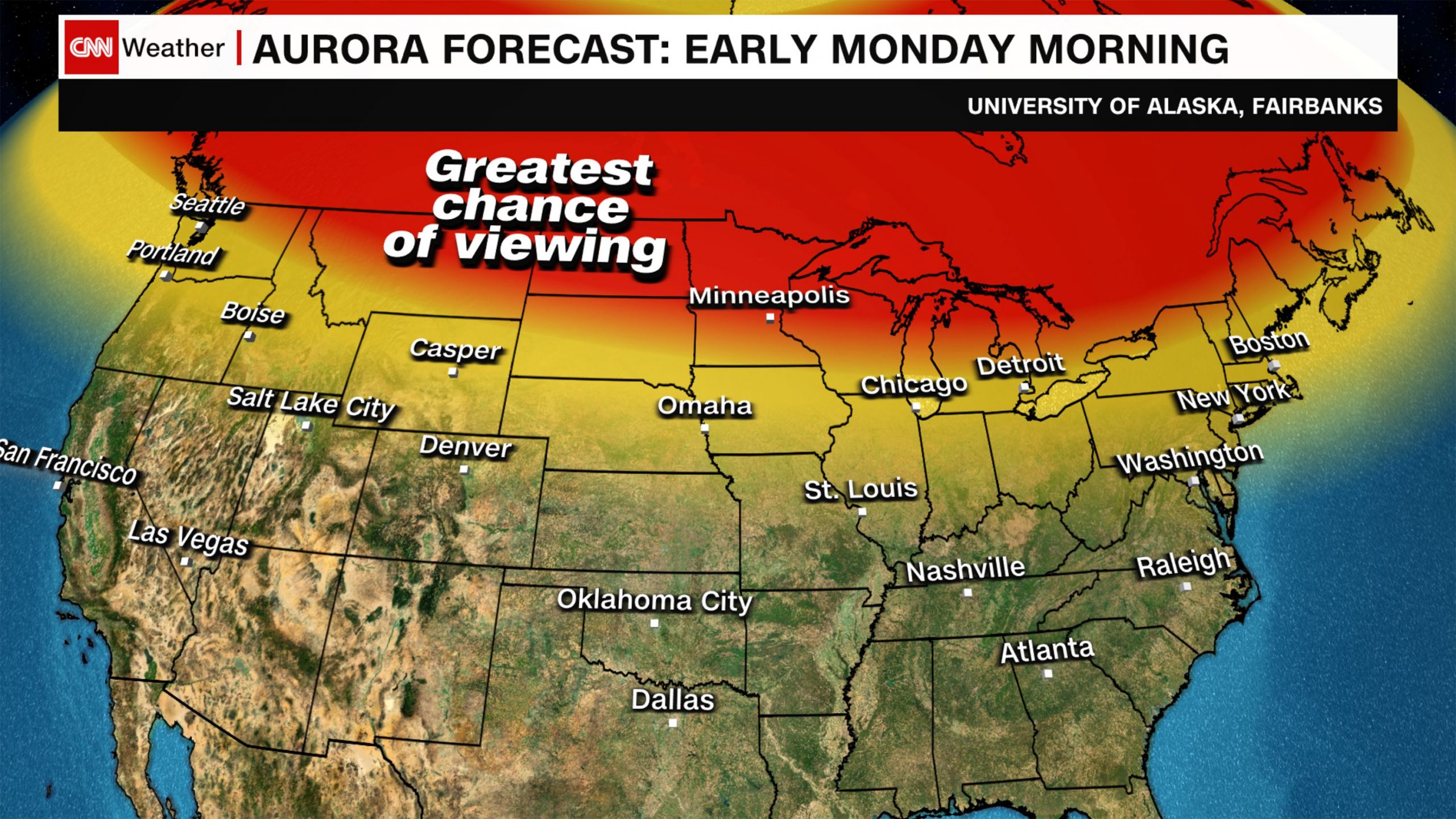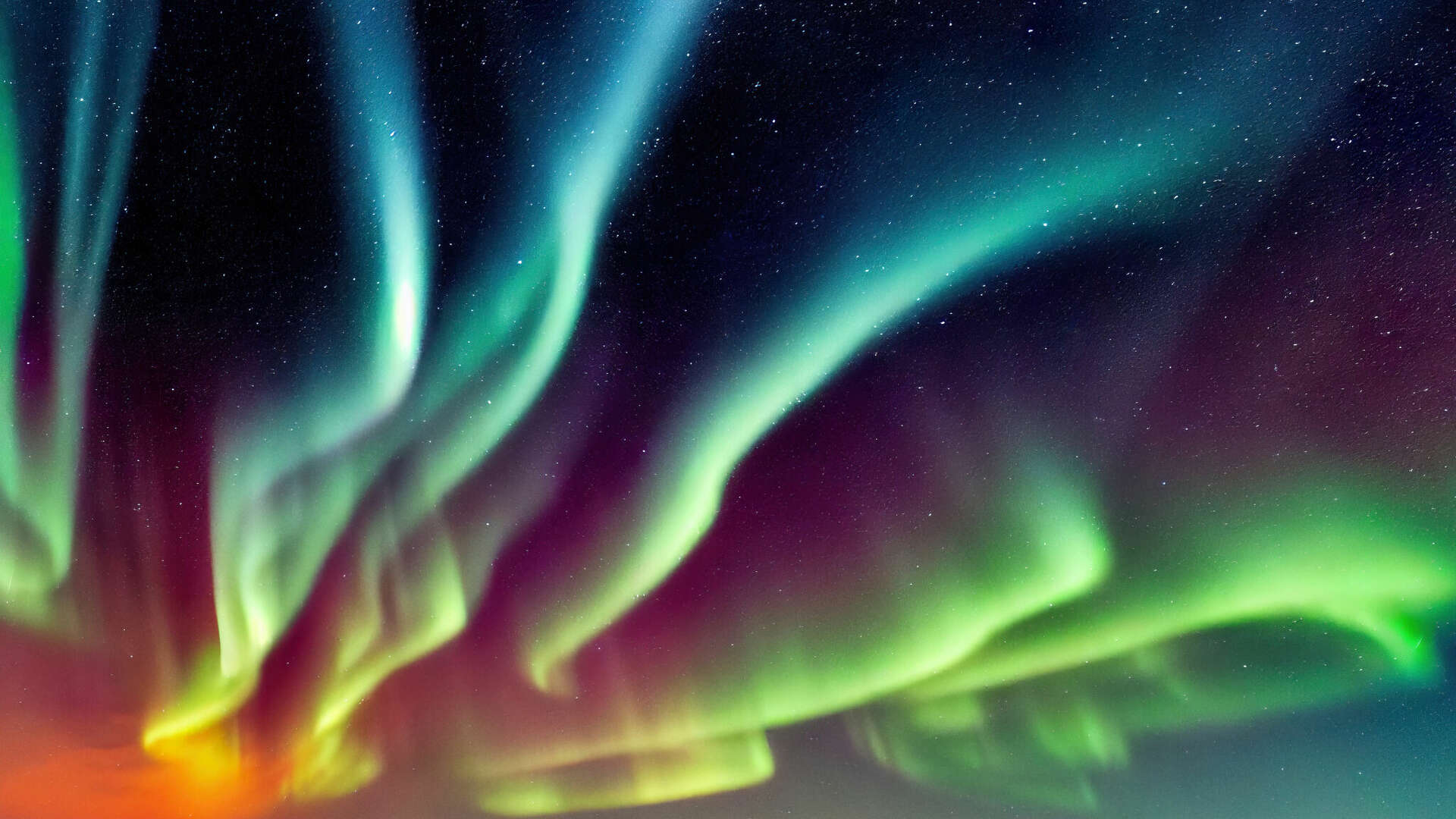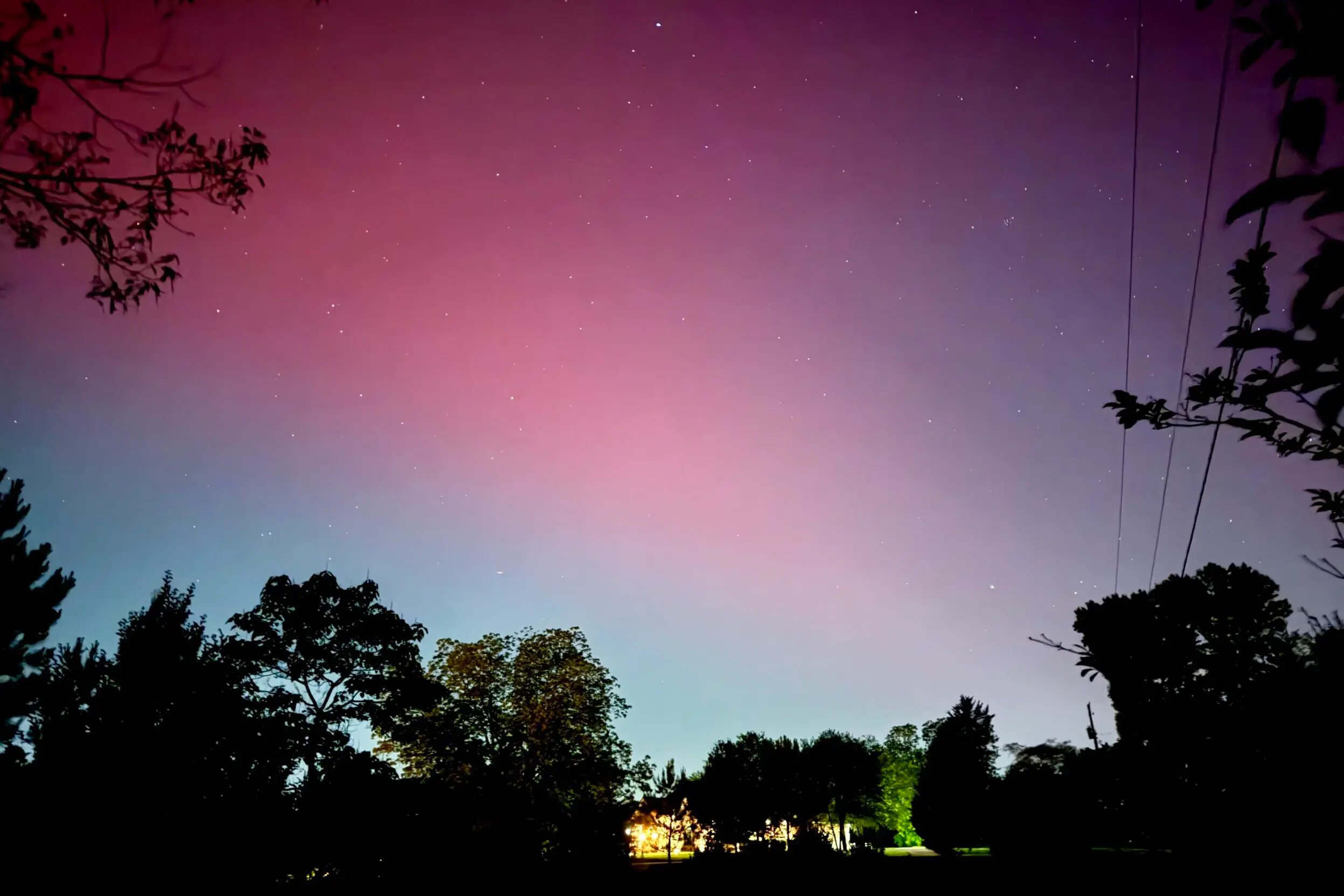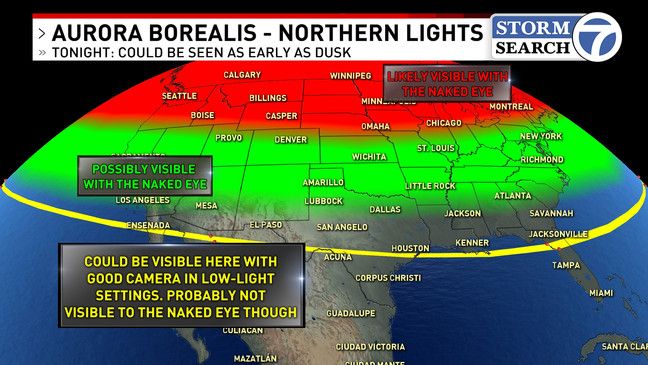
A few states along the Canadian border will have a chance to see the northern lights on Friday night, and another solar flare will likely bring auroral activity further south over the weekend, according to a National Oceanic and Atmospheric Administration forecast. (See updated forecast for Saturday.)
Northern Lights light up the skies across the UK
The northern lights may be seen in states like
Washington, Minnesota and Wisconsin.
Auroral activity is forecast with a Kp index of three on a scale of nine for Friday night, meaning the northern lights will be brighter and be “quite pleasing to look at” for those in the right areas.
The NOAA expects a maximum Kp index of four for both Saturday and Sunday, after the sun emitted an X2.3 solar flare—classified by NASA as the most intense—earlier this week, which could disturb the Earth’s atmosphere and affect GPS and communications signals, according to NASA.
There is a “slight chance” for minor solar radiation over the weekend, NOAA said, potentially resulting in some radio blackouts.
Where Will The Northern Lights Be Visible?
A view line—marking a minimal opportunity to see auroral activity—sweeps just below the Canadian border, though most of northern Canada and Alaska will have a low likelihood of seeing the phenomenon. Parts of northern Montana, North Dakota and Minnesota will have a lower chance, and areas in northern Washington, Idaho, South Dakota and Wisconsin have an ever lower likelihood. (See viewing line below.)
NOAA9
Friday night’s view line.NOAA
What’s The Best Way To See The Northern Lights?
The northern lights peak between 10 p.m. and 2 a.m. local time and are best seen at a high vantage point away from light pollution, according to NOAA.
What’s The Best Way To Photograph The Northern Lights?
A regular camera with the focus set to the farthest possible setting and a wide aperture, low shutter speed and high ISO value would be able to capture the northern lights, according to Adobe. If using a smartphone, Iceland’s tourism website recommends turning on night mode with a lower shutter speed.
There have been more sunspots and coronal mass ejections as the sun reaches its “solar maximum,” according to NASA. These events cause a shift in space weather and often cause aurora borealis to become more visible to more people. This peak will likely continue through 2025 and into early 2026, as other celestial events appear in the night sky. The Northern Taurids, a meteor shower active since Oct. 13, will peak next week and persist through Dec. 2. Other meteor showers will appear this year, including the Leonids, Geminids, Ursids and Quadrantids.
